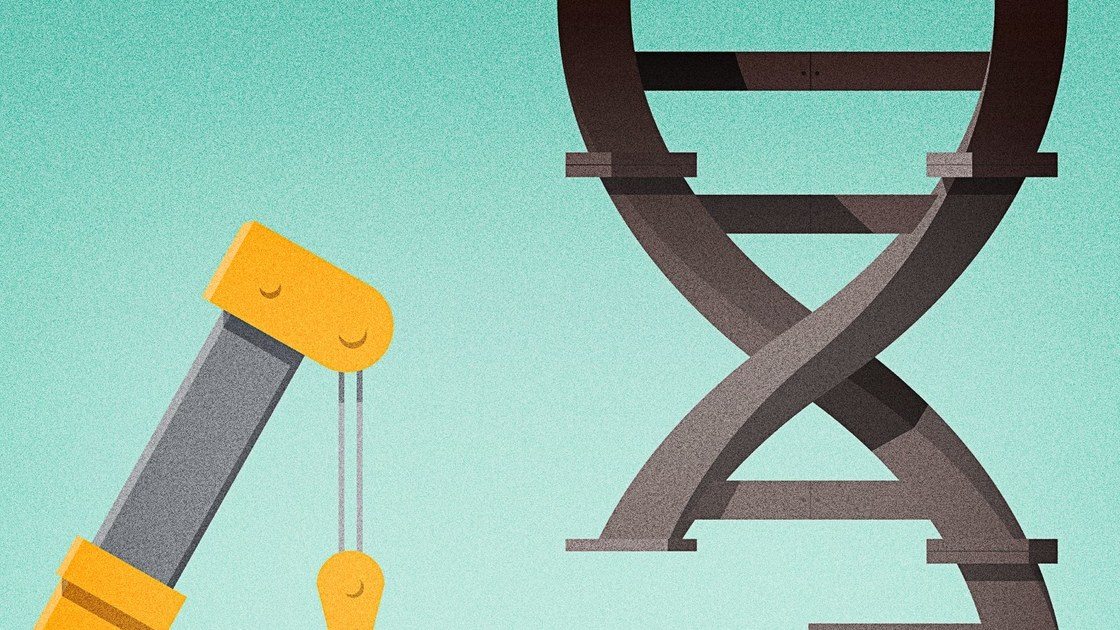Improved Gene-Editing Corrects Diverse Muscular Dystrophy Mutations
Genome editing with CRISPR/Cas9 is a promising new approach for correcting or mitigating disease-causing mutations. Duchenne muscular dystrophy (DMD) is associated with lethal degeneration of cardiac and skeletal muscle caused by more than 3000 different mutations in the X-linked dystrophin gene (DMD).
Most of these mutations are clustered in “hotspots.” Now, team led by Eric Olson, Ph.D, came up with an approach in order to take advantage of these hotspots.
The study’s authors, pioneered a technique called myoediting that removes mutated sections of the dystrophin gene that cause DMD, restoring normal function to cells with DMD mutations. The authors say that their approach could restore muscle function in up to 60% of DMD patients.
“We think these advancements will be valuable for the field and can help us move closer to tackling this disease in humans,” said Dr. Eric Olson, Director of the Hamon Center for Regenerative Science and Medicine and Co-Director of the Wellstone Muscular Dystrophy Cooperative Research Center at UT Southwestern.
“We made a mouse model that more faithfully represents the human disease,” explained Dr. Olson. Once researchers created the new mouse model with a common DMD-causing gene mutation, they were able to figure
out how to correct the problem. “We identified and optimized a simple way to correct dystrophin expression by a single cut in the genomic DNA,” said Dr. Leonela Amoasii, a postdoctoral fellow in Dr. Olson’s lab and the first author of this study.In 2014, Dr. Olson’s team first used CRISPR/Cas9-mediated genome editing to correct the mutation in the germ line of mice and prevent muscular dystrophy. For this study, researchers developed the new mouse model with a common human exon deletion seen in DMD, exon 50, using CRISPR/Cas9 gene-editing techniques to snip out that bit of the gene that codes for dystrophin, a protein necessary for healthy muscles.
They then modified a virus so that it would deliver the CRISPR/Cas9 gene-editing components specifically to muscle tissue, giving it more specificity and greater safety if the process is eventually used in humans, he said.
They put together heart muscle cells in a 3D scaffold, to measure how the cells performed. Not only did the technique allow the edited cells to produce the protein, it also restored muscle function, allowing the engineered heart muscle to beat.
“I’m surprised by how simple and effective this method turned out to be so far,” Olson says. CRISPR seems to have cut only the DNA spots it was supposed to, without making any so-called off-target edits, he says.
But follow-up studies are needed to confirm that’s actually the case. The technique has been tested in live mice, as well as dogs, and appears to be working. The mice have been cured for at least a year: the animals keep producing the dystrophin protein and look “very healthy,” Olson says. Now, the technique has been proven effective even in human cells in a petri dish.
Dr. Olson said he hopes to help carry out safety and preclinical studies that could lead to testing in humans in coming years. The technology is being developed for commercialization through biotech firm Exonics Therapeutics, launched in February 2017 to advance the research of Dr. Olson, its scientific founder.
Exonics Therapeutics Inc., which licenses the technology from UT Southwestern, recently announced it has secured $40 million in series A financing to advance its lead gene-editing program in Duchenne from The Column Group (TCG), a science-driven venture capital firm.






























